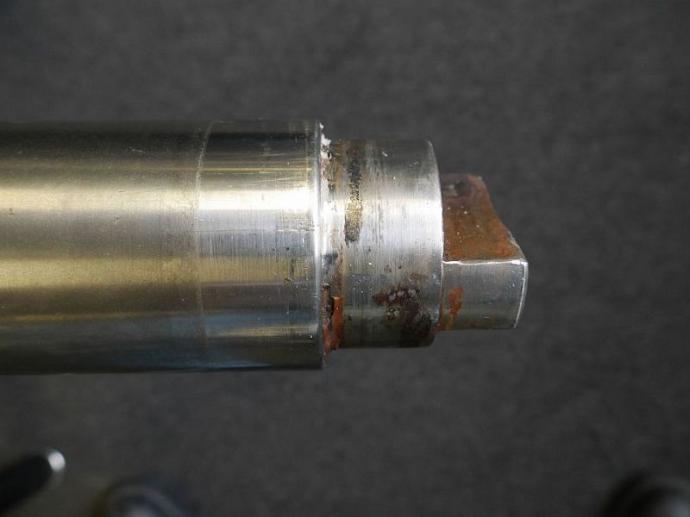
Recognize Wear
Wear occurs in every sector and every industry. It is almost always inevitable, because materials must come into contact with each other in a process. Fortunately, the extent of many wear forms can be limited by the correct surface condition. In addition, we can usually repair various forms of wear and tear and deliver the material to you more resistant than in its original condition. If you know which wear and tear there are, it is possible to recognize them in time and prevent harmful consequences as much as possible. Add a caption to improve the meaning of this image.
Abrasive damage is damage that occurs when hard and sharp surfaces or particles rub over a surface that is less wear resistant than the abrasive. The abrasive corners and edges often cause chips to disappear from the surface, leaving behind wear marks.
When two parts move against each other, a surface can become warm due to the friction. Due to the occurrence of cold welds and their breaking again, the surfaces will 'eat'. Pieces of metal also break off, which can cause abrasive wear.
Erosion
is a type of wear that occurs when wear marks remain in a surface after
solid, gaseous or liquid particles move along a material surface. The moment the surface of the part is also affected by chemical substances, the erosion process accelerates considerably.
Fretting
(or tribo-oxidation) is a corrosion damage that occurs at roughness
plugs on surfaces where metal comes into contact with other metal. The damage is caused by a combination of load and small mutual surface movements, for example as a result of vibrations. Typical damage characteristics of fretting are pits or grooves and rust formation (fit rust).
Bearing fit wear is a form of wear that occurs when a bearing fit has insufficient lubrication or is subjected to an excessive load. Misalignment can also contribute to this form of wear. The rotating and abrasive action of the bearing fit wears away particles from the inside of the part surrounding the bearing fit.
Wear
and corrosion & oxidation are often mentioned next to each other,
but corrosion & oxidation are actually also a form of wear. In many cases, corrosion & oxidation are part of a complex mechanical-physical-chemical wear process.
Pure oxidation is the reaction of a metal with oxygen to form oxides. These oxides do not have the properties of the metal, so the surface properties deteriorate.
Corrosion occurs when a surface is affected by an (electro) chemical reaction. The best-known form of corrosion is the rusting of steel. Because there are many different chemical reactions and conditions, there are also many different forms of corrosion. Think
of pitting corrosion, crevice corrosion, galvanic corrosion, stress
corrosion, acid corrosion, intercrystalline corrosion and high
temperature corrosion.
When a surface is repeatedly subjected to varying loads, cracks can form in the surface of the material. This phenomenon is known as surface fatigue. The cracks in the surface will eventually lead to particle break-out or even breakage of the part.
Fretting (or tribo-oxidation) is a corrosion damage that occurs at roughness plugs on surfaces where metal comes into contact with other metal. The damage is caused by a combination of load and small mutual surface movements, for example as a result of vibrations. Typical damage characteristics of fretting are pits or grooves and rust formation (fit rust).